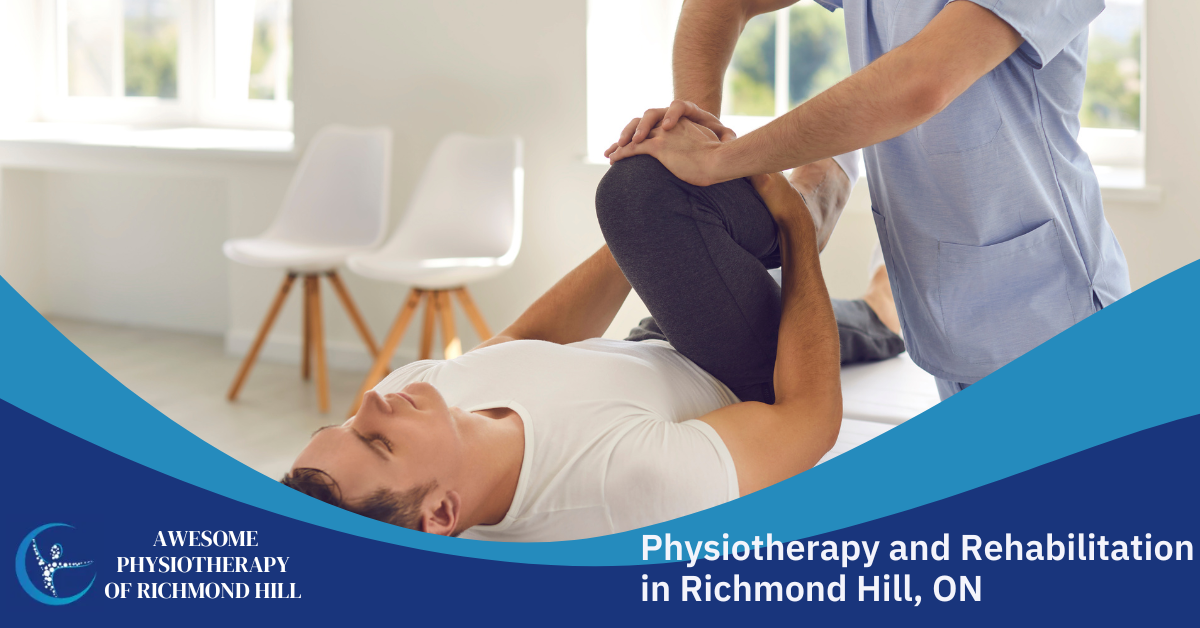Foot Pain Relief: How Physiotherapy Can Help
If you’re struggling with pain during every stride, you’re far from alone. Research shows that foot problems will affect around 75% of all Canadians at some point in their lives.
Because we rely on our feet so much, foot conditions can be among the most difficult injuries to rest. Hobbling around on one leg or staying in a chair can be frustrating, especially for fitness enthusiasts. Worse, getting foot pain relief isn’t always easy even when you do take the weight off your feet for a while.
That’s where physiotherapy comes in. After a thorough examination to find the source of your pain, our team can provide a tailored treatment plan to help. Here are a few ways we can address your condition.
Addressing Common Concerns
If you already know the source of your pain, especially if you’re struggling with a chronic issue, a physiotherapist can help with your concern. Many patients come in for help with common foot and ankle issues, including the following:
- Achilles tendonitis: This common injury happens when we overuse the tendon connecting the calf and heel
- Heel spurs: Repetitive strain can cause calcium deposits to build up on the heel
- Bursitis: The fluid-filled sac at the back of your heel can become inflamed with overtraining
- Plantar fasciitis: This occurs when the connective tissue on the bottom of your foot becomes inflamed, often from overuse
- Arthritis: Joint pain from arthritis will often affect the feet or ankles, especially with more active patients
- Tendinitis: Excessive overuse of the tendons can cause serious inflammation that can be hard to recover from
- Strains and sprains: Your connective tissues may stretch too far or tear with overuse, or from an acute injury
- Fractures: Trauma to the bone can cause an obvious break, but it’s also worth considering the possibility of stress fractures from overuse
If you’ve already gotten one of these diagnoses, physiotherapy can be a great way to manage your condition. The right foot pain relief exercises and treatments can enhance your mobility, flexibility, and strength as you recover.
Treating Complex Issues
Whether or not you already have a diagnosis, don’t forget that many conditions have complex underlying issues.
After all, our feet are quite complicated. The biomechanical structures involved in your feet and ankles must interact in perfect harmony in order to function. With 26 bones and 30 joints, not to mention the connective tissues, it’s safe to say that finding the root cause of any issue can be easier said than done!
Although many patients spend time researching the issue at hand, a self-diagnosis can often be a guess at best.
Instead, an expert will examine the mechanical structure from your forefoot to your heel to your ankle. This includes examining your foot movement and searching for areas of weakness, muscle tightness, and inflammation. Depending on the issue, they may also do a postural assessment as well.
These assessments can help identify problems with the function and mechanics of your foot. Even better, an experienced physiotherapist will use them to create a treatment plan based on the nuances of your condition.
Offering a Range of Therapies
While exercise therapy is often the foundation of any foot treatment plan, it’s far from the only solution a physiotherapist will offer. Here are a few key techniques an expert team can provide:
Exercise Therapy
This type of therapy will involve a range of exercises that can improve the strength, stability, and mobility of your feet and ankles as needed. Certain foot treatments will also help you improve your behavioral techniques. This can help address repetitive stress injuries, especially if you’ve been using the wrong form for months or years.
Your physiotherapist will always begin by analyzing your current pain levels, range of motion, and physical abilities. From there, they'll create a treatment plan tailored to your needs. As you improve and heal, those plans will change in intensity and frequency with ongoing evaluations of your progress.
Joint Mobilization
With joint mobilization therapy, your physiotherapist will move the joints of your foot or ankle for you. Often, they will stabilize one part of your joint while moving the next segment. This passive manual therapy can help decrease pain and increase function and mobility.
Radial Shockwave Therapy
This FDA-approved therapy uses shock waves to address tissue- and bone-related injuries. Best for patients with chronic pain, radial shockwave therapy can be a great alternative to painkillers or invasive surgery.
Custom Orthotics
In some cases, your foot pain may be a sign that you simply need more foot support.
An experienced physiotherapist can analyze your feet and ankles, in addition to your legs, hips, and pelvis, to decide whether additional arch or heel support might relieve your discomfort. They may also use gait scan technology to analyze your gait. This can help them pinpoint any abnormalities in your stride.
While store-bought shoe inserts can sometimes help, custom orthotics can often help you improve your function if these all-purpose items have failed you in the past.
Get Expert Foot Pain Relief Today
If you’re dealing with foot pain, you don’t have to do it alone. Stop guessing about the best treatments and seek expert help!
Whether you’re suffering from a recent injury or a chronic issue, our Richmond Hill physiotherapy team can help you get the foot pain relief you need. We'll work with you to improve your foot's function, balance, and strength, and we'll also recommend behavioral or lifestyle changes to help prevent future issues.
Book your appointment today to learn how we can help. We’ll be happy to answer any of your foot pain questions!



How Physiotherapy Can Help You Recover Faster: A Guide to Physiotherapy Centers In Richmond Hill, ON







